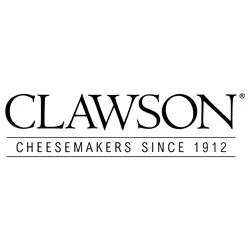Academy of Cheese Level 2 – Japanese Language Course by Culture & Culture
Class 1 – Wed. 16 Feb.
Class 2 – Wed. 2 Mar.
Class 3 – Fri. 4 Mar
Class 4 – Wed. 9 Mar.
Class 5 – Wed. 16 Mar.
Class 6 – Wed. 23 Mar.
Class 7 – Fri. 25 Mar.
Class 8 – Wed. 30 Mar.
All Virtual (Zoom) – 10:30am – 12:30pm (UK Time)
Course Fee (UK residents) :
£580 (Delegate Pack, Cheeses all included)
£500 (Delegate Pack included, no cheese)
£480 (No Delegate Pack, no cheese)
Course Fee (Japan residents):
£660 (Delegate Pack, Cheeses all included)
£640 (No Delegate Pack, Cheeses are included)
** The Japanese language comprehensive course handout (hardcopy only) will be provided
to all delegates.
Academy of Cheese Level 2 – 2022年3月 Zoomオンラインコース
日時: 6週間にわたり8回(各2時間)Zoom (オンライン)で講義
Class 1 – 2月16日(水):チーズ製造と原料乳
Class 2 – 3月2日 (水):チーズの熟成、ウォッシュタイプ、青カビ(テイスティング込み
)
Class 3 – 3月4日(金):チーズ専門店のスタッフに求められる知識と技量、状況に応じた
チーズセレクションの提案(テイスティング込み)
Class 4 – 3月9日(水):チーズサービング、伝統料理、チーズの劣化
Class 5 – 3月16日(水):衛生管理と規制 / チーズ業界知識(イギリスチーズの歴史と現
在のトレンド)
Class 6 – 3月23日(水):ヨーロッパの代表チーズ、チーズコミュニケーション(各チー
ズの具体的な説明、ドリンク、食材との組み合わせ – テイスティング込み)
Class 7 – 3月25日(金):業界知識 (イギリスのチーズ歴史、現在の世界のマーケットト
レンド)、イギリスモダンチーズ(テイスティング込み)
Class 8 – 3月30日(水):予備知識、総復習、Q&A、試験対策
午前クラス – 午前10時半〜午後12時半(イギリス時間)
午後クラス – 午後7時〜午後9時 (イギリス時間)*
*午前、午後クラス、どちらかを基本時間帯としてお選び頂きますが、事前にご連絡いただ
ければ、各自のご都合に合わせクラス毎に時間帯の変更は可能です
**最低5回はライブご出席お願いします。レコーディング視聴は3クラス分まで
***イギリスのコロナウィルス感染状況に合わせ、午前の部のテイスティングクラスはロン
ドン市内でオンサイト開催の可能性もありますが、その際、ご出席できない皆さまとは、ラ
イブで繋ぎ、オンラインでご参加できるようにいたします
受講料:イギリス在住の方
– £580 (AoC教本冊子、試食チーズ全て込み)
– £500 (AoC教本冊子込み、試食チーズ無し/ご自身で手配)
– £480(AoCデジタル教本のみ、試食チーズ無し/ご自身で手配)
日本在住の方
– £660(AoC教本冊子、試食チーズ全て込み)
– £640(AoCデジタル教本のみ、試食チーズ込み)
* 試食チーズボックスは、3月の第1週と、第4週、2回に分けて配送されます


















Reviews
There are no reviews yet.